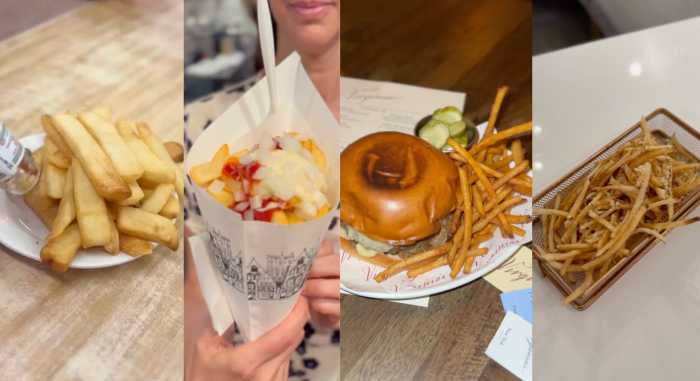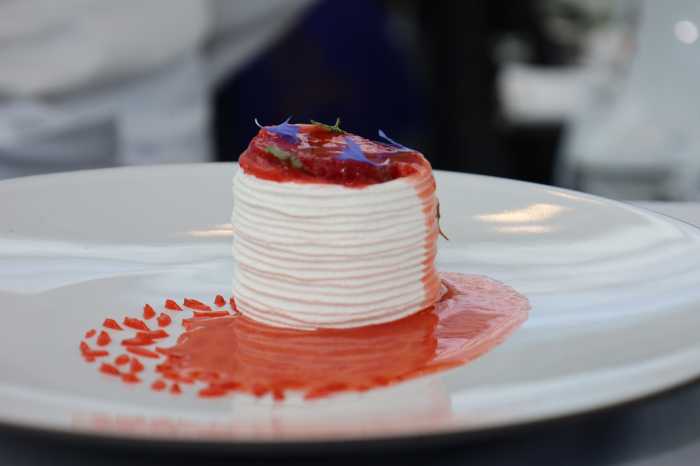At the new Japanese restaurant Unagi, nearly everything has been imported from Japan, from the signage to the grill to the green tea to the eels.
To owner Samuel Pierce’s knowledge, the NoLIta restaurant is the first freshwater eel restaurant in the United States to source live eels from Japan (he checks customs).
When Unagi — named after the grilled eel dish — opens Saturday, a 1,000-gallon eel tank will be the centerpiece. Customers will be able to watch the fish get prepared on a charcoal grill from the open kitchen, helmed by chef Hiroki Fukushima, who has trained in Japan and is a veteran of Gayjumaru.
Unagi is a very popular specialty in Japan — that’s where Pierce, a practicing lawyer, first had it on a business trip.
“When I first started traveling to Japan, I fell completely in love with eating eel,” the Upper East Side resident says. “We really want to introduce it to New Yorkers at large. It’s just the most delicious, healthy, satisfying food there is in the entire world. I’m convinced of that.”
New York is on something of an unagi kick; Hachibei, another all-eel restaurant, opened last month in midtown.
amNewYork spoke to Pierce, 31, about unagi and his restaurant, located at 60 Kenmare St.
For people who aren’t familiar, what is unagi?
Unagi is freshwater eel. In Japan, they never serve freshwater fish at sushi restaurants. Sushi restaurants are only marine fish. And freshwater fish, you generally don’t want to eat them raw. But when they’re cooked they’re great. The traditional way of preparing unagi is keeping them live in the restaurant, and then you actually cut their head off. The head keeps moving even after it’s been cut off from the body. So it’s really, really fresh in our restaurant. We take the eel fresh out of the tank for each customer, cut it up and then we grill it on top of ancient Japanese oak charcoal. Customers at our restaurant have a number of options for how they want their eel presented. We have a sweet soy sauce that we can put on the eel. They can just have it plain. We have some really nice rice that we also imported from Japan, and so you can have your eel on top of rice. We serve a couple other things on the side, like the liver. Some people find it very delicious. And pickles is another thing that’s traditional to have with eel, so we’ll serve that as well. You can put wasabi on it too, some people like to do that.
Do you see anyone being squeamish about eating it?
I think when you see it on the plate, it’s not something that makes you squeamish; it doesn’t have a head on it or anything like that. The fact that the slaughter station and all that, some people might get a little squeamish over that. But I think most people will find it intriguing. There’s huge international interest in the eel business, like the ecology of the eels is completely mysterious. It has a really interesting life cycle. They live in rivers and when they breed, they take a trip down to the ocean, they lay their eggs and then they die. It’s a very mysterious life cycle, and there’s all kinds of protections in place worldwide so that fishermen don’t take the eels that are swimming down to breed so that the stocks can replenish themselves and we don’t wipe them out.
Overall, what kind of availability did you see here for getting this once you tried to seek it out more?
Historically in America, a lot of Japanese restaurants have embraced the fusion concept. So they serve a lot of different things — some Western dishes, an amalgamation of Japanese dishes. A lot of restaurants serve eel on rice, or they serve unagi sushi, which in Japan is very nontraditional. But it’s completely different from what we’re doing. All those restaurants are importing frozen patties. I’m watching customs, all the imports of eel from Japan, we’re the only ones doing it. Or at least the only ones declaring it to customs.
It seems in general that there’s a lot of interest in Japanese food and cocktails. Japan Village in Industry City recently opened.
The Japanese food scene is just so popular. The other thing that we’re trying to do is keep our prices really low. We don’t want to price anybody out of the market. We want to give everybody a chance to try it, no matter what your income is, at least on occasion. You can have a whole eel or we’ll split it up into half an eel. For half an eel we will charge $29, and for a whole eel we’ll charge $39. Even by standards in Japan that’s a really good price.
Do you see, given the concerns about depleting eel, and it seems like such a specialized thing to do here, do you see this being something that can scale or open more locations?
Yeah, we definitely do. We will definitely look and see where else in New York City our customers are coming from and try and open more locations. And definitely going to look at maybe Las Vegas, which I also think will be a really nice fit for this because it’s a show, a spectacle a little bit. We’re definitely thinking expansion. As far as the availability of eels, we’re lucky in that we have a really great relationship with our wholesaler, they’re going to be able to supply us eels. On a more macro level, there’s a lot of research being done into the eel life cycle. For long-term sustainability, I do think that there’s going to need to be technological advances for the world as a whole to increase its consumption. But as far as our restaurant and a couple more locations for us, I don’t see supply constraints playing a major role. We hope that by opening this restaurant it’s really going to increase New Yorkers’ and Americans’ more generally, their understanding of eel and the environmental issues involved and hopefully that’s going to galvanize more support for investment in technology and improved methodologies for harvesting in a sustainable way. There’s tens of thousands of these restaurants in Japan, a couple of ours certainly are not going to be a major data point in the total world consumption of eel.





































